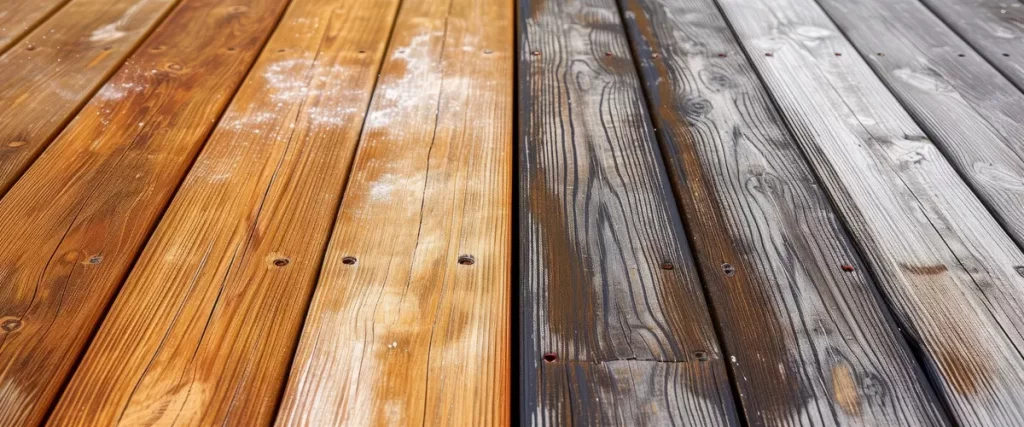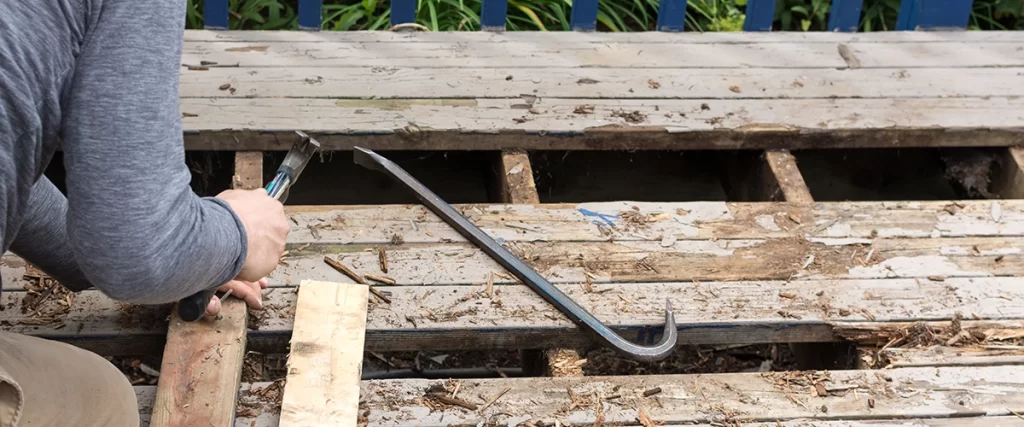Tidal flooding poses a significant threat to deck foundations in Annapolis and Lake Shore, Maryland. With sea levels rising and flooding events becoming more frequent, it’s crucial for homeowners to understand how these conditions impact their properties.
Understanding Tidal Flooding in Annapolis & Lake Shore
Annapolis and Lake Shore are coastal communities that have experienced a notable increase in tidal flooding over the years. According to the Union of Concerned Scientists, Annapolis has seen a more than fourfold increase in tidal flooding since 1970, making it one of the most frequently flooded East Coast cities.
This rise in flooding events is attributed to sea-level rise and land subsidence, leading to more frequent “nuisance flooding” that disrupts daily life and damages infrastructure.

How Tidal Flooding Affects Deck Foundations
Deck foundations are particularly vulnerable to the effects of tidal flooding. The constant exposure to moisture can lead to:
- Wood Rot and Decay: Persistent dampness promotes fungal growth, leading to structural weakening.
- Soil Erosion: Floodwaters can wash away supporting soil, compromising the stability of footings.
- Corrosion of Metal Fasteners: Saltwater accelerates the corrosion of metal components, leading to joint failures.
- Foundation Shifting: Repeated saturation and drying cycles can cause foundations to settle unevenly.
Building Codes and Regulations
In response to these challenges, local authorities have implemented regulations to mitigate flood damage. The City of Annapolis has established a Floodplain Management Code (Chapter 17.11) that outlines requirements for construction in flood-prone areas citeturn0search1.
These regulations aim to promote public safety and reduce property damage by enforcing standards for building elevation, materials, and design.
Best Practices for Flood-Resistant Deck Construction
To ensure your deck withstands tidal flooding:
- Elevate the Deck: Build the deck above the Base Flood Elevation (BFE) to minimize flood exposure.
- Use Flood-Resistant Materials: Opt for materials like composite decking, PVC, or tropical hardwoods that resist moisture and decay.
- Secure Foundations: Employ deep-driven piles or piers that anchor below the erosion zone.
- Install Proper Drainage: Ensure water can flow freely beneath the deck to prevent pooling.
- Regular Maintenance: Inspect and maintain the deck to address any damage promptly.
Top Manufacturers of Flood-Resistant Decking Materials
When selecting materials for your deck, consider these reputable manufacturers known for their flood-resistant products:
- Trex: Offers composite decking that resists moisture, rot, and UV damage.
- TimberTech: Provides durable, low-maintenance composite decking options.
- AZEK: Specializes in PVC decking that’s impervious to water and mold.
- Ipe Woods USA: Supplies tropical hardwoods like Ipe, known for natural resistance to moisture and insects.

FAQs
How often should I inspect my deck for flood damage?
It’s advisable to inspect your deck at least twice a year and after any significant flooding event.
Can I retrofit my existing deck to be more flood-resistant?
Yes, retrofitting options include elevating the deck, replacing materials with flood-resistant alternatives, and reinforcing foundations.
Are there grants or assistance programs for making flood-resistant upgrades?
Local and federal programs may offer assistance. Check with the City of Annapolis or FEMA for available resources.
Conclusion
Tidal flooding is an escalating concern for homeowners in Annapolis and Lake Shore. By understanding the risks and implementing flood-resistant construction practices, you can protect your deck and enhance the resilience of your property. For personalized advice and professional assistance on your deck building project, feel free to contact us at (443) 926-6996.
